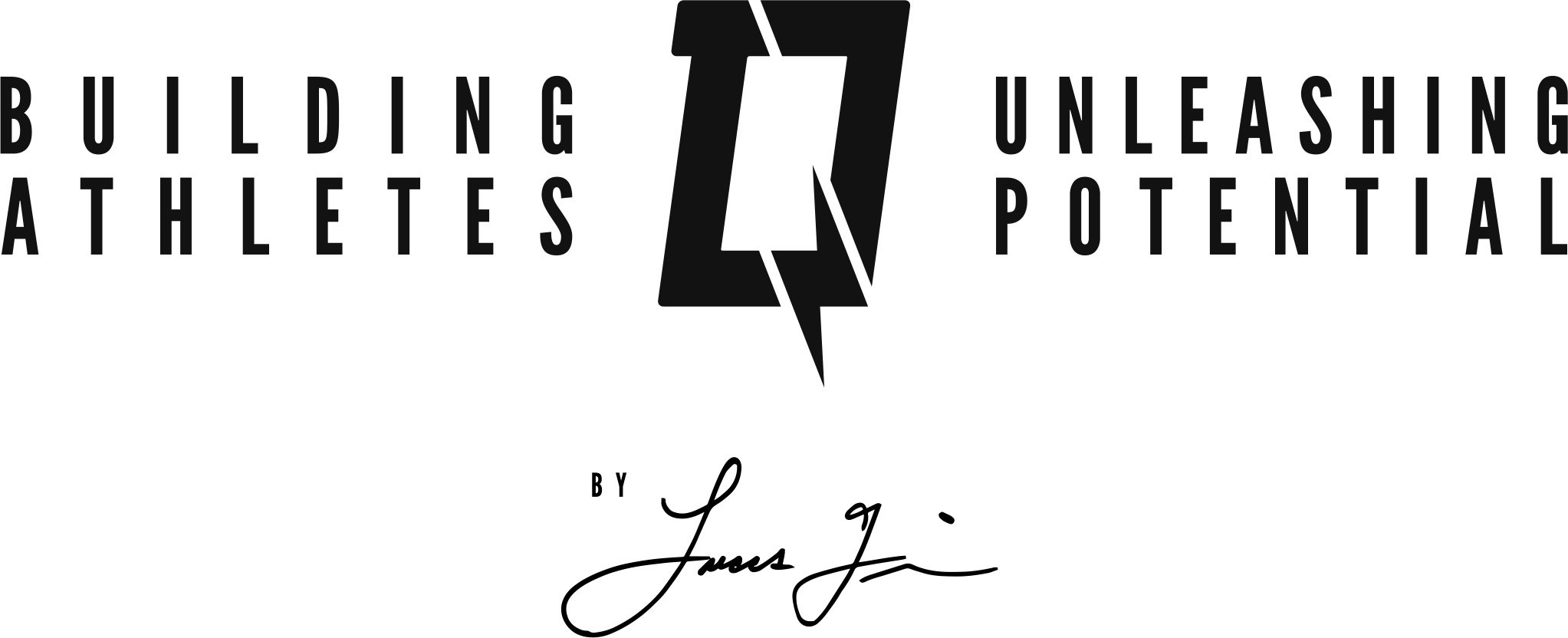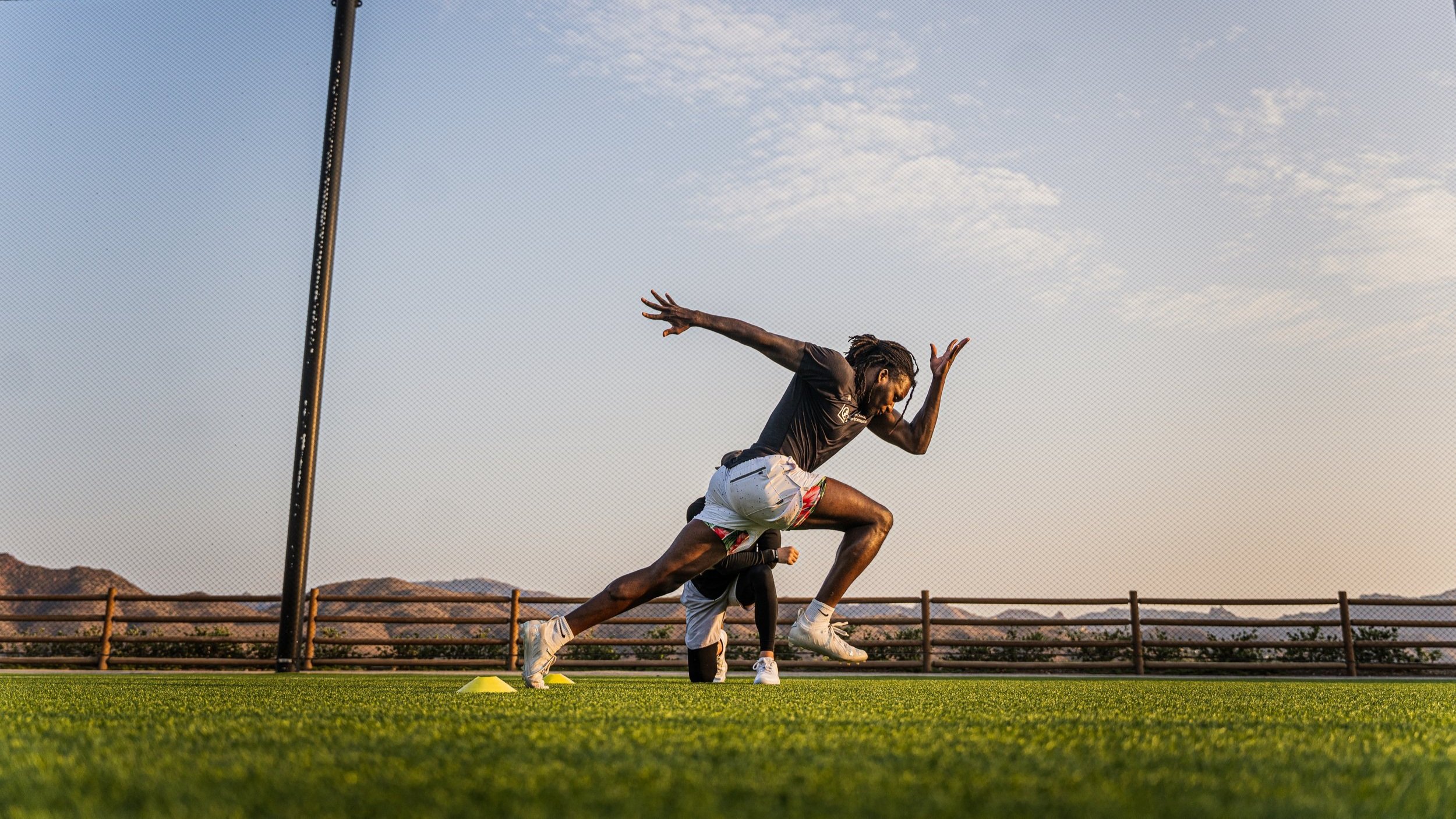SPEED TRAINING
Can an athlete get faster?
Emphatically, YES.
Overview of my Speed Training & Development Program:
I follow a short-to-long sprint model of speed development, heavily influenced by the training philosophy of Charlie Francis, Brad DeWeese, and others.
Emphasis on improving sprint technique & task-specific strength (enhanced neural drive for task-specific motor units through post-activation potentiation)
Following the short-to-long model, I want to prioritize max effort, high intensity, and methodically increasing distance and volume for the athlete’s speed development. Thus, I like to follow a constraints-based approach in how I want to facilitate certain qualities that can make an athlete faster.
Here are some things that are important to consider when talking about technical execution of both acceleration and max velocity:
Proper horizontally oriented forces and optimally directed force production in early acceleration. Teaching the athlete how to push in acceleration according to what we know about Newtonian physics (namely, Newton’s Third Law of Motion — For every action, there is an equal and opposite reaction).
Effective postural alignment and body lean through a braced torso with center of mass ahead of the heels for advantageous force transfer (I like to teach foot contacts of the heel behind the butt in early acceleration. Again, teaching the athlete to learn to PUSH to project the center of mass, and then again to attack the ground in a DOWN & BACK manner.
Efficient shin angle and piston-like leg action with stiff ankle contact (developed through plyometric and strength training).
Appropriate, “big” arm action of the hands down and back to assist in vertical lift at takeoff.
Again, I prefer a periodized “short-to-long” method, which emphasizes the development of acceleration into maximal velocity as the athlete progresses in both strength, coordination, and work capacity.
I see strength development, particularly of the posterior chain, as critical in improving the athlete’s ability to produce force. Top sprinters have been shown to exert high amounts of force into the ground relative to their bodyweight. In my opinion, getting an athlete, particularly young athletes, to learn how to be more forceful into the ground, will make a big difference in their overall speed and ability to run fast.
Mobility of the ankles, Hips, and thoracic spine to assist in biomechanical efficiency of movement and decrease risk of injury.
Curvilinear acceleration for transitioning into maximal velocity training can be a great tool for team sport athletes.
Post-activation potentiation following heavy sled sprinting for improved neural drive and CNS capability is another great tool in a constraints-based approach.
For a more in-depth view on my philosophy regarding Speed training, see below.
Ultimately, from a training perspective and how I work with my athletes, the self-teaching mechanism of training acceleration on an incline provides many benefits—particularly the facilitation of proper horizontally oriented forces, body lean, and prolonged longer ground contact times that mimic effective acceleration mechanics. Then, later, I introduce sled sprinting (commonly referred to as sled towing) into our acceleration development. I utilize slow-motion video capture as well as laser timing systems to provide the athlete with immediate visual feedback and pinpoint accuracy of sprint times. Moreover, critical in my training programs for speed development, alongside our technical and biomechanical drills and incline/sled work, is the emphasis on strength development (both lower body and postural strength). I utilize a periodized short-to-long method of sprint training to improve acceleration followed by maximal velocity sprinting for overall speed development (coinciding with plyometric and strength/power training).
My programs for speed training and development focus on teaching the athlete about the fundamentals of speed, and then subsequently taking the athlete through a consistent and constraints based approach in a short-to-long model.
For a greater understanding on speed development in general, and how I train my athletes to improve their speed, one has to understand some of the basics of sprinting—and how to sprint fast.
For instance, sprinting has classically been defined as the relationship between stride length and stride frequency (Mann & Herman, 1985). However, this is not the sole determinate of an athlete’s speed, and simply trying to take longer strides will slow the athlete down and possibly put the hamstring at risk for injury. More importantly, then, is that underpinning both the stride length and the stride frequency of an athlete is the amount of force the athlete applies into the ground, and at what rate and angle. Thus, the limiting factor in sprint performance comes down to force production and the application of that force (biomechanics). Force exerted horizontally into the ground underpins the ability of an athlete to accelerate effectively. Research by Weyand et al (2000) establishes the importance of force into the ground over and above rapid leg movements. Weyand concludes that “human runners reach faster top speeds not by repositioning their limbs more rapidly in the air, but by applying great support forces to the ground” (1). Their landmark study found that “at any speed, applying greater forces in opposition to gravity would increase a runner’s vertical velocity at takeoff, thereby increasing both the aerial time and forward distance traveled between steps” (1).
Furthermore, according to DeWeese and Nimphius, “much of the current literature suggests that the amount of vertical force applied to the ground during the stance phase may be the most critical component to improving speed” (527). Even more so, the rate at which that force is produced (Rate of Force Development) and subsequently applied to the ground is of critical importance. It has been found that elite sprinters cover more ground with each stride than novice sprinters as well as more steps per second. That is, 2.70m vs. 2.56m and 4.63 steps/s vs. 4.43 steps/s, respectively. (Mann, 2011). This equates to less time on the ground (Ground Contact Time, or GCT) and more time in the air. DeWeese and Nimphius continue by asserting that “the currently accepted model of sprint success is based on the athlete’s ability to produce and overcome ground reaction forces in a short amount of time” (538). Even more, they assert that “this high level of force allows the sprinter to produce longer stride lengths at a faster rate” and that an athlete’s speed on a track is “a reflection of enhanced neuromuscular factors, namely maximal strength, RFD, and impulse” (541). Impulse can simply be defined as the product of force exerted and the time interval it took for the force to be exerted. The understanding of Impulse as it relates to not only acceleration but also human locomotion as a whole is paramount. DeWeese and Nimphius describe this by writing, “Within human locomotion, the magnitude of the force coupled with the length of time the force is produced during an individual step is paramount to success” (524). Further, they go on to write, “changes in these forces can increase or decrease the athlete’s momentum. For this reason, training should focus on impulse—the area under the force-time curve—in addition to RFD” (524).
Sprinting can be divided into two phases: acceleration and maximal velocity. In team sport athletes, acceleration especially is critical to performance and is a key determinant of success. Thus, the development of acceleration in team sport athletes can have great transfer to their sport. Morin et al in the chapter entitled “Speed and acceleration training” in the work Advanced Strength and Conditioning: An Evidenced Based Approach edited by Anthony Turner and Paul Comfort assert that “it is important to emphasize that the ability to accelerate over short distances should be prioritized in many sport activities rather than maximal velocity, since maximal velocity is rarely achieved in these kinds of sports” (310). Consequently, I place an emphasis, particularly early on in the training stages, with my athletes on the development of acceleration.
Cronin & Hansen (2006) describe acceleration as “characterized by a longer stance phase, a large proportion of which is propulsion. During the acceleration phase, there is greater knee flexion at foot strike, and greater recruitment of the knee extensor musculature” (49). Morin and colleagues have done more recent research (in relation to Heavy Sled Towing) that implies that even more so critical than just force into the ground is the orientation of that force—specifically horizontal ground reaction forces (GRF’s) over and above that of vertical GRF’s in the acceleration phase of the sprint. More research and additional understanding as it relates to improving acceleration performance is critical. This understanding provides the basis as to how it relates to training methods and modalities of improving sprint acceleration performance in athletes. Ultimately, it has been asserted that the ability to apply more horizontal force into the ground is critical for acceleration (Kawamore et al, 2013; Morin et al., 2011). Thus, sled towing as a means to exert greater net horizontal force/impulse into the ground may accumulate to improve the acceleration of an athlete. The added resistance hypothetically speaking should increase the demand for an athlete to apply horizontal force of the lower body musculature into the ground (as well as impulse). Over time, then, the accumulated effect should transfer to an athlete’s improved ability to produce that horizontal force and impulse when they are contacting the ground during acceleration ultimately increasing step length (Lockie, Murphy, & Spinks 2007; Cronin & Hansen, 2006; Kawamori et al 2014). Specifically, Alcaraz et al cite the benefits of sled towing that includes the “recruitment of more muscle fibers, requires more neural activation, and increases the load in hip extensor muscles” (71).
References
Deweese, Brad & Nimphius, Sophia (2016). Essentials of Strength and Conditioning, 4th Edition. Program Design and Technique for Speed and Agility Training.
Mann, Ralph & Herman, John (1985). Kinematic Analysis of Olympic Sprint Performance: Men’s 200 Meters.
Weyand (2000) Weyand, P.G., Sternlight, D. B., Bellizzi, M. J., & Wright, S. (2000). Faster top running speeds are achieved with greater ground forces not more rapid leg movements. Journal of Applied Physiology (89), 1991-1999.
Petrakos, George & Morin, Jean-Benoît & Egan, Brendan. (2016). Resisted Sled Sprint Training to Improve Sprint Performance: A Systematic Review. Sports medicine (Auckland, N.Z.). 46. 381-400. 10.1007/s40279-015-0422-8.
Turner, Anthony & Comfort, Paul (2018). Advanced Strength and Conditioning: An Evidence-Based Approach. Speed and Acceleration Training. 310-327.
Cronin, John & Hansen, Keir (2006). Resisted Sprint Training for the Acceleration Phase of Sprinting. National Strength and Conditioning Association (28). 42-51.
Morin JB, Petrakos G, Jimenez-Reyes P, Brown SR, Samozino P, and Cross MR (2016). Very-Heavy Sled Training For Improving Horizontal Force Output in Soccer Players. International Journal of Sports Physiology and Performance.
Naoki Kawamori, Robert Newton, and Ken Nosaka (2014). Effects of Weighted Sled Towing on Ground Reaction Force During the Acceleration Phase of Sprint Running. Journal of Sports Sciences (32, 12). 1139-1145.

